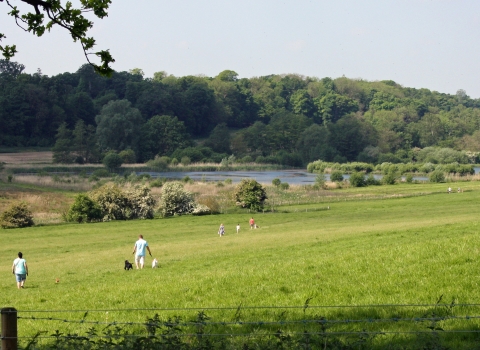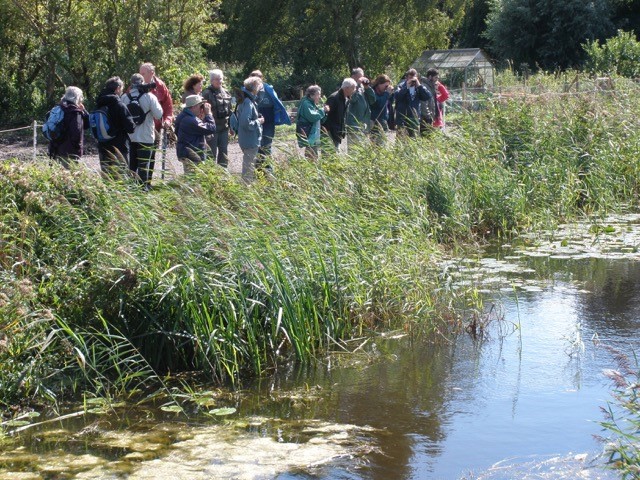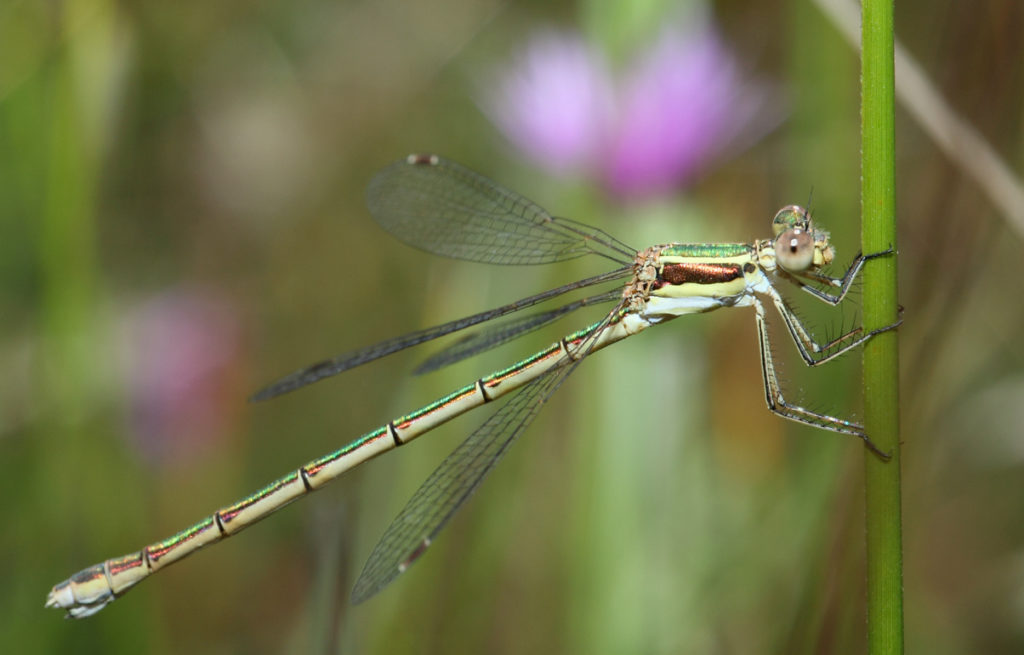
Morning Dragonfly Walk at Panshanger Park, Herts
- Date:
- Saturday, 17 May 2025
- Time:
-
11:00 am - 1:00 pm
- Event Category:
- Meeting Other
- Event Website:
- https://www.eventbrite.com/o/panshanger-park-106005835671
- Location:
- Panshanger Park Hertford SG14 2NA United Kingdom
- Location:
- Panshanger Park Hertford SG14 2NA United Kingdom

Discover the Magic of Dragonflies at Panshanger Park!
Join dragonfly experts Tim Hill & Steve Brooks from HMWT for a fascinating guided walk along the Panshanger Park Dragonfly Trail. Dive into the world of these incredible insects as you learn about their lifecycles, hunting techniques, and unique resting behaviours. Along the way, you’ll also get the chance to identify different dragonfly species in their natural habitat.
Distance: Approx. 2 miles over uneven ground/tracks
Dogs: Welcome on a lead
Who Can Join? Suitable for adults, families, and children aged 8+
Weather Notice: The walk may be cancelled in the event of strong winds or rain.
Limited Spaces – Booking Essential! Secure your spot to avoid disappointment. Book via Eventbrite.
For any questions, please contact dan.hamley@maydencroft.co.uk.
This FREE guided walk is part of Tarmac’s community programme at Panshanger Park—a wonderful opportunity to connect with nature and explore the beauty of dragonflies up close!
This event is running several times. See Eventbrite page to book any of the following slots:
17th May 11am
17th May 1.30pm
14th June 11am
14th June 1.30pm
12th July 11am
9th August 11am
13th September 11am
[Image: Panshanger Park by Jen Gilbert]
Other
- Requirements
- Car Park Charges will apply: Payable via the Ringo App
- Meet
- Thieves Lane Car Park
- Contact
- dan.hamley@maydencroft.co.uk
- Date:
- Saturday, 17 May 2025
- Time:
-
1:30 pm - 3:30 pm
- Event Category:
- Meeting Other
- Event Website:
- https://www.eventbrite.com/o/panshanger-park-106005835671
- Location:
- Panshanger Park Hertford SG14 2NA United Kingdom
- Location:
- Panshanger Park Hertford SG14 2NA United Kingdom

Discover the Magic of Dragonflies at Panshanger Park!
Join dragonfly experts Tim Hill & Steve Brooks from HMWT for a fascinating guided walk along the Panshanger Park Dragonfly Trail. Dive into the world of these incredible insects as you learn about their lifecycles, hunting techniques, and unique resting behaviours. Along the way, you’ll also get the chance to identify different dragonfly species in their natural habitat.
Distance: Approx. 2 miles over uneven ground/tracks
Dogs: Welcome on a lead
Who Can Join? Suitable for adults, families, and children aged 8+
Weather Notice: The walk may be cancelled in the event of strong winds or rain.
Limited Spaces – Booking Essential! Secure your spot to avoid disappointment. Book via Eventbrite.
For any questions, please contact dan.hamley@maydencroft.co.uk.
This FREE guided walk is part of Tarmac’s community programme at Panshanger Park—a wonderful opportunity to connect with nature and explore the beauty of dragonflies up close!
This event is running several times. See Eventbrite page to book any of the following slots:
17th May 11am
17th May 1.30pm
14th June 11am
14th June 1.30pm
12th July 11am
9th August 11am
13th September 11am
[Image: Panshanger Park by Jen Gilbert]
Other
- Requirements
- Car Park Charges will apply: Payable via the Ringo App
- Meet
- Thieves Lane Car Park
- Contact
- dan.hamley@maydencroft.co.uk
- Date:
- Saturday, 14 June 2025
- Time:
-
1:30 pm - 3:30 pm
- Event Category:
- Meeting Other
- Event Website:
- https://www.eventbrite.com/o/panshanger-park-106005835671
- Location:
- Panshanger Park Hertford SG14 2NA United Kingdom
- Location:
- Panshanger Park Hertford SG14 2NA United Kingdom

Discover the Magic of Dragonflies at Panshanger Park!
Join dragonfly experts Tim Hill & Steve Brooks from HMWT for a fascinating guided walk along the Panshanger Park Dragonfly Trail. Dive into the world of these incredible insects as you learn about their lifecycles, hunting techniques, and unique resting behaviours. Along the way, you’ll also get the chance to identify different dragonfly species in their natural habitat.
Distance: Approx. 2 miles over uneven ground/tracks
Dogs: Welcome on a lead
Who Can Join? Suitable for adults, families, and children aged 8+
Weather Notice: The walk may be cancelled in the event of strong winds or rain.
Limited Spaces – Booking Essential! Secure your spot to avoid disappointment. Book via Eventbrite.
For any questions, please contact dan.hamley@maydencroft.co.uk.
This FREE guided walk is part of Tarmac’s community programme at Panshanger Park—a wonderful opportunity to connect with nature and explore the beauty of dragonflies up close!
This event is running several times. See Eventbrite page to book any of the following slots:
17th May 11am
17th May 1.30pm
14th June 11am
14th June 1.30pm
12th July 11am
9th August 11am
13th September 11am
[Image: Panshanger Park by Jen Gilbert]
Other
- Requirements
- Car Park Charges will apply: Payable via the Ringo App
- Meet
- Thieves Lane Car Park
- Contact
- dan.hamley@maydencroft.co.uk
- Start:
- 9 August @ 10:00 am
- End:
- 10 August @ 3:00 pm
- Cost:
- Free
- Event Category:
- Meeting Other
- Event Website:
- https://www.wwt.org.uk/wetland-centres/steart-marshes/whats-on/events/dragonfly-weekend-25
- Location:
- WWT Steart Marshes TA5 2PU United Kingdom

WWT Steart Marshes is a Dragonfly Hotspot, home to 23 species of dragonfly! Discover the dragonfly species at the site, including their lifecycle and why this wetland habitat is so important for them.
The event runs 10am-3pm on both Saturday 9th and Sunday 10th.
For further details and timings of activities, see the WWT webpage: https://www.wwt.org.uk/wetland-centres/steart-marshes/whats-on/events/dragonfly-weekend-25
[Image: Blue-tailed Damselfly at Steart Marshes by Dave Smallshire]
- Date:
- Saturday, 14 June 2025
- Time:
-
10:00 am - 1:00 pm
- Event Category:
- Meeting run by BDS
- Location:
- NWT Upton Fen Norfolk, NR13 6EQ United Kingdom
- Venue Website:
- View Venue Website

Morning walk (approx. 3 hours) to look for a broad range of dragonfly species, including Norfolk Hawker and Variable Damselfly.
Leader / contact: Dr Pam Taylor – Norfolk Dragonfly Recorder
Email: pam.taylor@british-dragonflies.org.uk to book or phone 01493 509596
Meet: 10.00am at Upton Fen car park, TG379136. Postcode NR13 6EQ (Low Road).
From Acle, Norwich or Wroxham head towards South Walsham, then follow signs for Pilson Green. Local public transport services are limited. The nearest train station is Acle (3.5 miles).
Image: Norfolk Hawker by Pam Taylor
Other
- Requirements
- Booking essential – preferably by email. Numbers strictly limited. Wellies or boots, insect repellent. Packed lunch if staying on site (unguided) for the afternoon.
- Meet
- 10.00am at Upton Fen car park, TG379136. Postcode NR13 6EQ (Low Road).
- Contact
- pam.taylor@british-dragonflies.org.uk
- Start:
- 12 July @ 10:00 am
- End:
- 13 July @ 4:00 pm
- Event Category:
- Meeting BDS Present
- Location:
- Emberton Country Park
Olney Road
Emberton, Buckinghamshire MK46 5FJ United Kingdom - Venue Phone:
- 01234 711575
- Venue Website:
- View Venue Website
- Location:
- Emberton Country Park
Olney Road
Emberton, Buckinghamshire MK46 5FJ United Kingdom - Venue Phone:
- 01234 711575
- Venue Website:
- View Venue Website

Dragonfly walks and stall as part of the Emberton Country Park 60th celebration weekend.
There will be other entertainment, stalls, and services as part of the birthday event.
Three guided walks will occur each day at 11am, 1pm and 3pm , lasting 1 hour each, led by the site’s dragonfly recorder. The walks will focus on the diversity of dragonflies on site, as well as other invertebrates and birds.
The event runs 10am-4pm on Saturday 12th and Sunday 13th.
Other
- Additional Info
- There's usually an admission fee for cars only of £5.50. There are very good facilities including toilets, parking, a café, and a play area for children.
- Contact
- 01234 711575 emberton.park@milton-keynes.gov.uk
- Date:
- Saturday, 28 June 2025
- Time:
-
10:30 am - 2:00 pm
- Event Category:
- Meeting run by BDS
- Location:
- Emberton Country Park
Olney Road
Emberton, Buckinghamshire MK46 5FJ United Kingdom - Venue Phone:
- 01234 711575
- Venue Website:
- View Venue Website
- Location:
- Emberton Country Park
Olney Road
Emberton, Buckinghamshire MK46 5FJ United Kingdom - Venue Phone:
- 01234 711575
- Venue Website:
- View Venue Website

Guided Dragonfly walk at Emberton Country Park, Bucks.
Meet at 10.30am for an 11am start, for a dragonfly walk that will run until 1-2pm.
Other
- Requirements
- Please phone 01234 711575 to book a place.
- Additional Info
- There's usually an admission fee for cars only of £5.50 There are very good facilities including toilets, parking, a café, and a play area for children.
- Contact
- 01234 711575 emberton.park@milton-keynes.gov.uk
- Date:
- Sunday, 27 July 2025
- Time:
-
10:30 am - 4:00 pm
- Cost:
- Free
- Event Category:
- Meeting run by BDS
- Location:
- Red River Valley Local Nature Reserve
Cornwall Fire and Rescue Service
Tolvaddon, Cornwall TR14 0EQ United Kingdom
Organiser:

An opportunity to see the Scarce Blue-tailed Damselflies, Small Red Damselflies and 16 other species that have made the Red River Valley Local Nature Reserve at Great Wheal Seton, Rosewarne Mill and Bell Lake Marsh their home.
Other
- Requirements
- Bring lunch, water, wellies, sunscreen, handwash & close focusing binoculars if you have them.
- Additional Info
- Note that there are no public toilet facilities at the sites we are visiting. Easy walking between sites but marshy ground and narrow walkways on site.
- Meet
- Meet at the bottom of the Fire Brigade Site, Tolvaddon, grid ref: SW657417, What3words: ///races.chose.defrost
- Contact
- Steve Jones: aparthenope@aol.com
- Date:
- Sunday, 13 July 2025
- Time:
-
10:30 am - 4:00 pm
- Cost:
- Free
- Event Category:
- Meeting run by BDS
- Location:
- Penhale Sands MOD site
Perran Sands, Mount Gate, Mount, Rose
Truro, Cornwall TR8 5PZ United Kingdom
Organiser:

An opportunity to see the newly discovered Southern Emerald Damselflies in Cornwall and to help explore & establish their range across the dune complex in this restricted access area. Moving on to other sites afterwards. Numbers limited to 20, booking essential.
Image: Female Lestes barbarus by Antonio A Goncalves
Other
- Requirements
- Booking required. Bring lunch, water, wellies, sunscreen, handwash & close focusing binoculars if you have them.
- Additional Info
- This event is being held in an active military training area, so for everyone’s safety, it is essential to follow the directions of Event Leaders at all times. Please arrive promptly as the gate is locked behind us. Book with leader. Note that there are no public toilet facilities at the sites we are visiting. Fairly easy walking across the site between the wet flushes.
- Meet
- Meeting place: Meet at the Mount Gate, Mount, Rose, Truro TR8 5PZ, Grid ref: SW783567, What3words: ///collision.memo.milkman
- Contact
- Steve Jones: aparthenope@aol.com
- Start:
- 19 September @ 1:00 pm
- End:
- 21 September @ 5:00 pm
- Cost:
- £300 – £505
- Event Category:
- Meeting Other
- Location:
- Preston Montford Field Centre Montford Bridge Shrewsbury SY4 1DX United Kingdom
- Venue Phone:
- 01743 852040
- Venue Website:
- View Venue Website
Organiser:
- Phone:
- 01743 852100
- Email:
- Email Organizer
- Website:
- View Organiser Website

This 2.5 day intermediate Freshwater Invertebrates course will provide you with the surveying and identification skills you need to begin to survey freshwater habitats.
Freshwater invertebrates are those which spend at least part of their lifecycle in freshwater, and they are often used in freshwater ecology studies as indicators to assess the health of freshwater ecosystems. Knowing how to identify freshwater species is a key skill for any ecologists or conservationists working in freshwater habitats.
This course will include:
- Introduction to freshwater ecosystems
- Sampling techniques and water quality assessments
- Identification of species
- Bio-security, legislation, risk management and invasive species management
Other
- Requirements
- Booking required.
- Contact
- Tel: 01743 852100 Email: enquiries@field-studies-council.org
